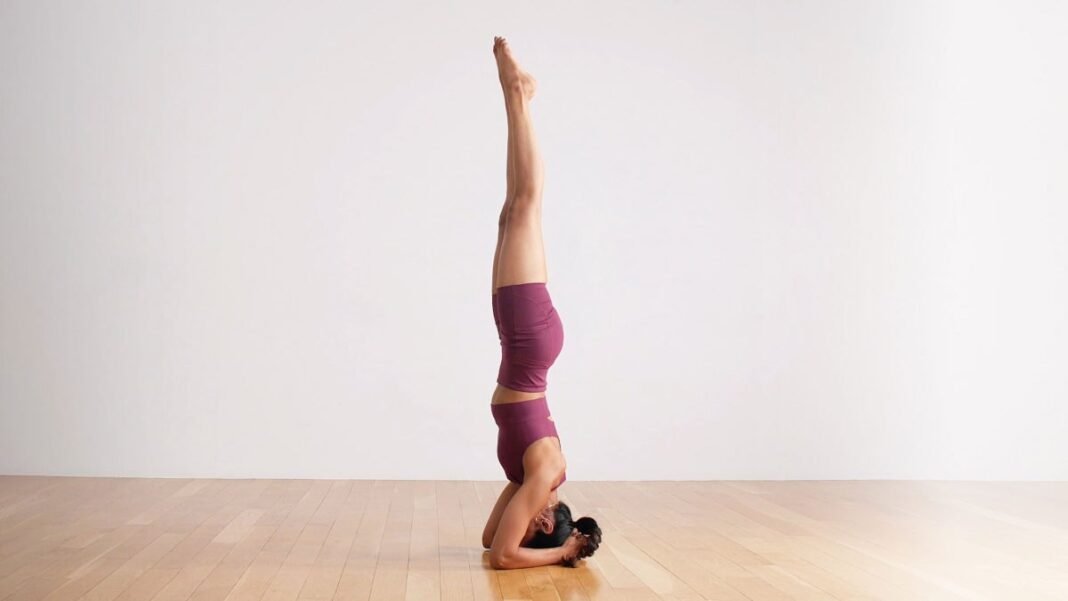“], “filter”: { “nextExceptions”: “img, blockquote, div”, “nextContainsExceptions”: “img, blockquote, a.btn, a.o-button”} }”>
I’m afraid that Headstand will hurt my neck. When will I be ready to try it for the first time?
In recent years, an increasing number of yoga teachers have felt conflicted over the practice of Headstand, or Sirsasana, and have quietly refrained from teaching it in group yoga classes. Other teachers insist that Headstand is an essential and traditional posture that challenges students to confront fears, create upper body strength, enhance focus, and facilitate body awareness. Iyengar yoga founder B.K.S. Iyengar described Headstand as the “king of all yoga poses” and that he was rumored to remain in the inversion for 30 minutes at a time.
But the pose isn’t without risks. Even practiced yoga students can unknowingly create pressure on the cervical spine if they lack the upper body strength and alignment to hold proper alignment, increasing the potential for injury. San Francisco-based yoga teacher Jenny Clise rarely teaches Headstand in a group class and only occasionally instructs students how to come into the inversion in workshops or private lessons.
The ability to safely practice Headstand, or any pose, depends on the individual practicing it. For that reason, it’s safest to consult with an experienced yoga teacher who is familiar with your practice before attempting it the first time, explains Clise. Your teacher can offer suggestions as to specific prep poses that will help strengthen your body and balance before you practice it.
Yoga teacher Annie Carpenter suggests that before trying Headstand for the first time, “you should be able to hold Downward-Facing Dog, Wide-Legged Forward Bend, Forearm Plank, and Dolphin for several minutes each.” These poses each require similar strength and alignment, such as sustaining external shoulder rotation, as Headstand, explains Carpenter.
When the time comes, remember that being upside-down is incredibly disorienting and even basic cues can become confusing, so it’s “safest to attempt your first several (hundred) Headstands under the careful supervision of your teacher,” says Clise.
When you and your teacher decide that you’re ready to practice it on your own, you can start to come into the basic shape with one foot firmly pressing into the wall or by situating yourself in a doorway, which allows a structural support for you to slowly walk your way into the inversion. Later you can enter by starting in Dolphin Pose and then walking your feet forward until your hips are stacked above your shoulders. Never kick yourself up into Headstand.
To protect yourself, Carpenter suggests you elongate the muscles from your shoulder blades to your fingers to avoid placing weight in your neck, refrain from jutting your ribs forward, and maintain a drishti, or focused gaze, on the wall straight behind you to help with balance. Think Tadasana (Mountain Pose) but inverted. After practicing Headstand, Carpenter suggests you take Child’s Pose followed by Downward Dog to release back and neck tension.
For some of us, Headstand might never be an appropriate pose for our bodies to practice, including is anyone with cervical disc and eye issues, heart issues, and high or extremely low blood pressure, says Carpenter. You can practice Forearm Plank as an alternative to Headstand if you’re seeking to strengthen your shoulders and core.
This article has been updated. Originally published March 23, 2015.
Got a question about alignment in a certain yoga pose? Want to better understand an aspect of yoga philosophy? Need advice on how to approach a challenging situation in your class? Submit your questions here or email us at asktheteacher@yogajournal.com, and we may answer it in an upcoming column.

